“Prepare a list of the 10 most beautiful Jaguars,” they told me. A bit of a poisoned chalice this one, because many will disagree with the choices. But I’ve never been one to shy away from a challenge – I finished second in the school 100m race – so here are my choices, starting with something obvious beginning with the letter ‘E’. Well, the E-Type is celebrating a rather important anniversary in 2021.
Jaguar E-Type
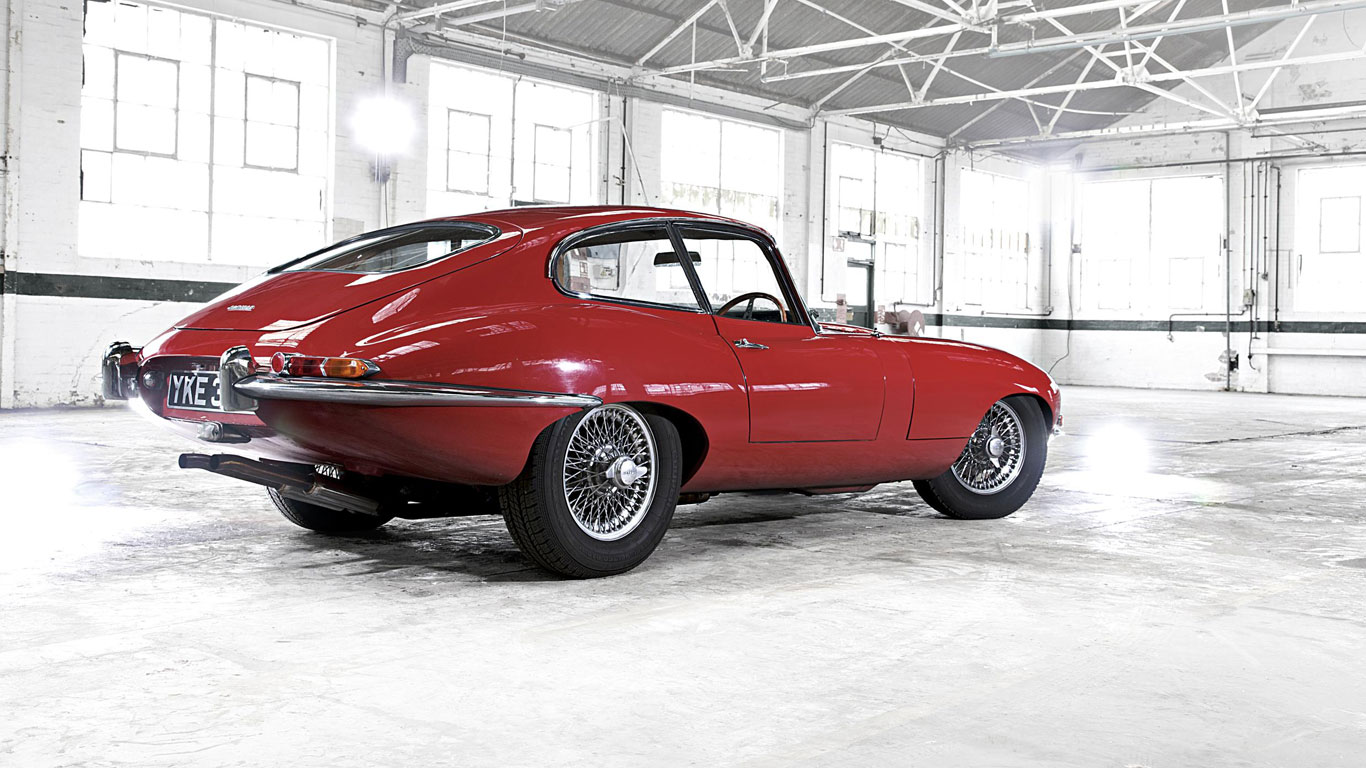
Enzo Ferrari’s quote about the Jaguar E-type has been repeated so many times, it must be true. As has Frank Sinatra’s “I want that car and I want it now” comment upon seeing the E-Type for the first time.
There are many unwritten rules in motoring writing, such as linking the Reliant Scimitar to Princess Anne, or mentioning the seven-year warranty within the opening paragraph of any Kia new car review. Similarly, one must also include the E-Type in any feature focused on the world’s most beautiful cars.
Of the car, LJK Setright said: “even two years after production had begun in 1961, [the E-Type] could still turn more heads than a platoon of poachers in a poultry farm. It fitted like a glove, went like the wind, looked like a million dollars, and sold for little more than a couple of thousand pounds”.
Malcolm Sayer didn’t set out to design the world’s most beautiful car, the styling was merely a byproduct of the aerodynamicist’s desire to go fast. Jaguar’s design director Ian Callum claims: “Malcolm Sayer shaped the E-Type with absolutely pure geometric lines. He wasn’t driven by aesthetics for the sake of it, he was trying to build something that was shaped by mathematics. That’s how he built his cars up and their beauty is determined by purity and simplicity.”
Jaguar XK120
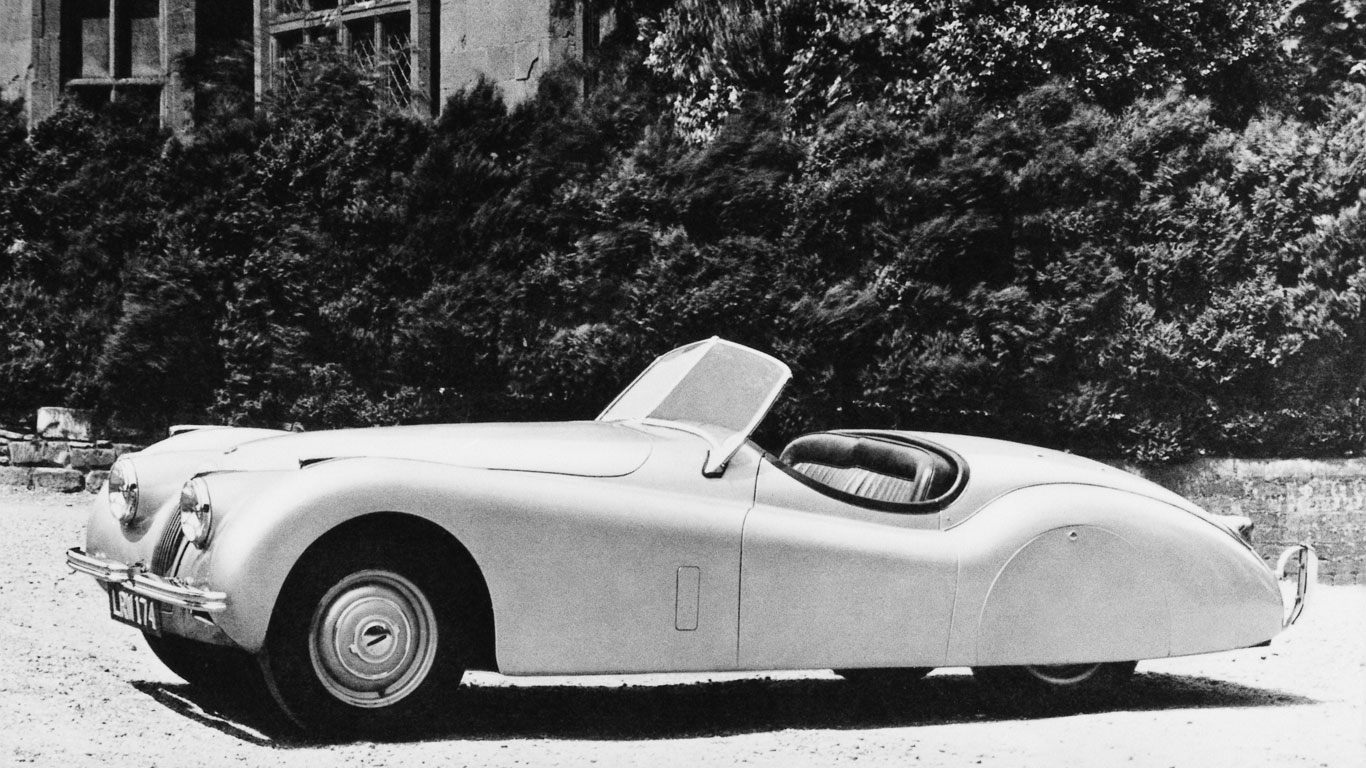
But here’s the thing: is the E-Type really the most beautiful car in the world? Is it even the most beautiful Jaguar? If one Jag can rival the E-Type for its beauty, it’s the XK120. Here was a sports car that, in 1948, was so beautiful, it was responsible for spearheading the British sports car’s invasion of the US.
In his book Jaguar Sports Cars, Paul Skilleter tells the story of how Sir William Lyons designed the body shell in less than two weeks, with the prototype completed just in time for the Earls Court Motor Show in October 1948. Sir William is quoted as saying: “because it was done more quickly than anything before or since, and I could compare weeks, almost days, with years and it was not altered from the first attempt”.
In May 1949, a group of journalists were flown to Belgium to witness a high-speed run on the Jabbeke-Aeltre autoroute. With timing under the control of the Belgian RAC, an XK120 with the roof and side screens in place recorded a speed of 126.448mph mean. Later, with the windscreen replaced with an aluminum cowl, and a tonneau cover over the passenger seat, the XK120 achieved 132.596mph.
In truth, the XK120 looked a tad awkward with its roof in place, but with the top down it is simply beautiful and beautifully simple. Two years after the launch of the roadster, Jaguar unveiled a coupe version, while the later XK140 and XK150 models are no less alluring.
Jaguar XJ6
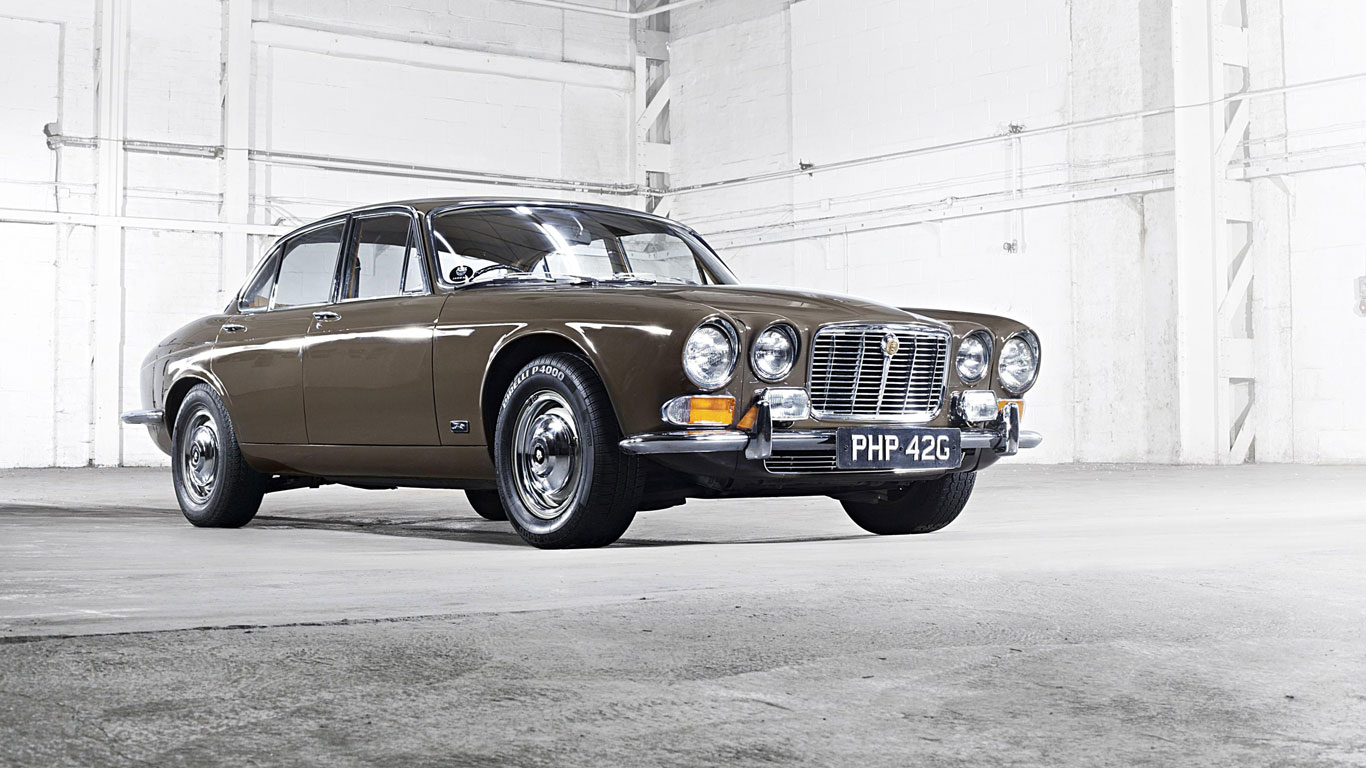
“The XJ6 was profound. It had so much visual power,” said Ian Callum in an Autocar interview. “The wheels were enormous. Nobody had seen anything like them before. They filled the whole body. I remember collecting a brochure from the local dealer and going back the next day for another. I still have them both.”
Jaguar began work on Project XJ4 in 1963/64, before unveiling the XJ6 at the British Motor Show in 1968. The quad headlights were evolved from the MkX, while the flared arches were filled with wide wheels and Dunlop high-performance tyres, designed especially for the XJ6. The overall result is an imposing yet elegant four-door saloon, with a design that evolved gracefully until the first radical overhaul in 2009.
But if you’re looking for the glamour model of the XJ6 range, look no further than the XJ Coupe, or XJ-C. Unveiled in 1973, the XJ-C was introduced in 1975, before production ended in 1977. Jaguar claims that “without realising it, [it] had created what would become one of the most desirable and rare XJs, with little over 10,000 completing production.”
In reality, the XJ-C was a commercial failure, hampered by poor refinement and a price tag that made it more expensive than the saloon. The XJS was another factor in its early demise, with the replacement for the E-Type arriving in 1975. But given the choice between the XJS and the XJ-C, many would opt for the latter.
Jaguar Mk2
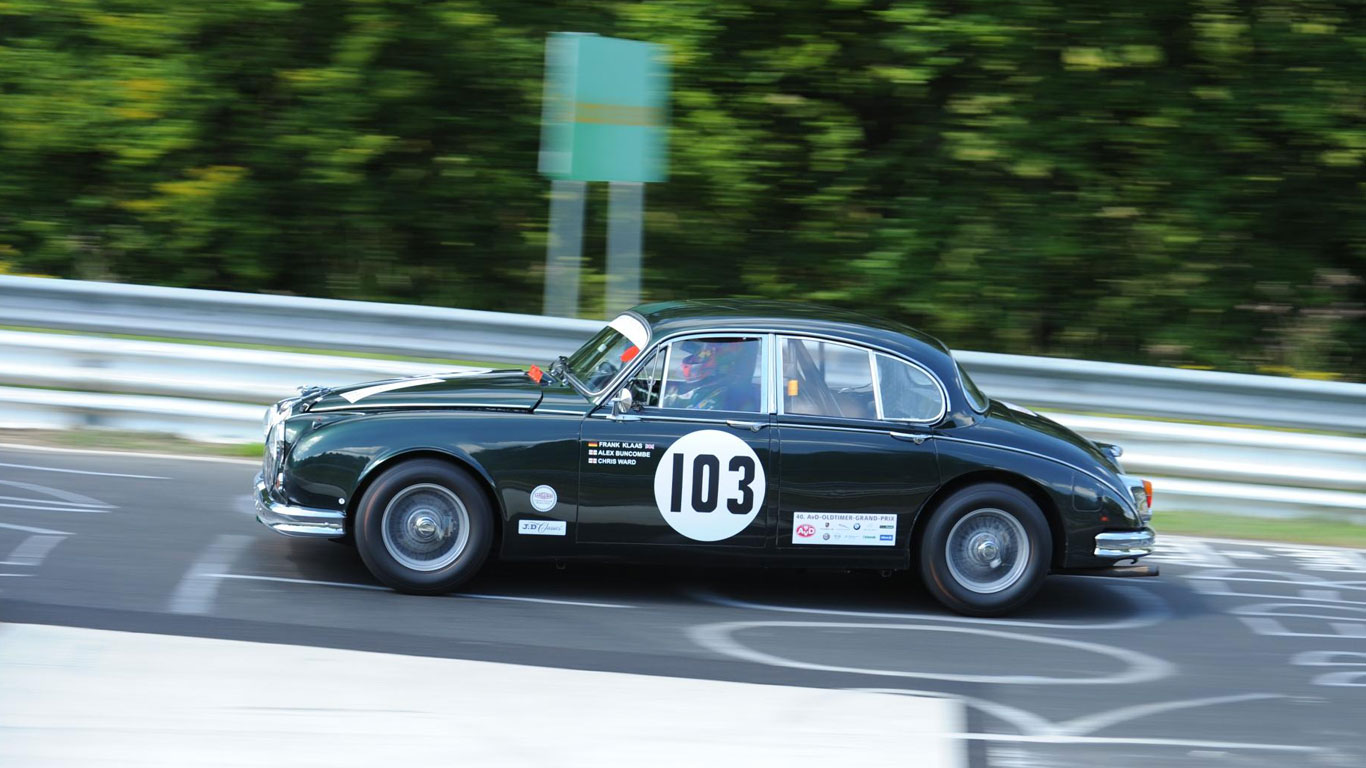
To some people, the Mk2 is the archetypal Jaguar. The E-Type might be the most beautiful and the XJ220 the most dramatic, but the ‘mark-two Jag’ is the quintessential four-door Jaguar, a status helped in no small part by the likes of Inspector Morse and Jack Regan.
Although it evolved from the Mk1, the Mk2 of 1959 was far better looking than its predecessor, with Sir William Lyons using a deeper windscreen, more glass and a wider rear track to create the ultimate sports saloon. At the time, it was Jaguar’s most successful model, with a total production of 83,701 units.
In 3.8-litre guise, the Mk2 offered a top speed of 125mph, sprinting to 50mph in 6.4 seconds. This made it the ideal car for a game of cops and robbers, with the Mk2 winning favour on both sides of the law. Famously, the Jaguar Mk2 was used as a getaway car in the Great Train Robbery.
The Mk2 also had a formidable competition history, both in touring car racing and rallying. In other words, the Jaguar Mk2 had it all: a beautiful, if slightly caddish, four-door saloon.
Jaguar D-Type
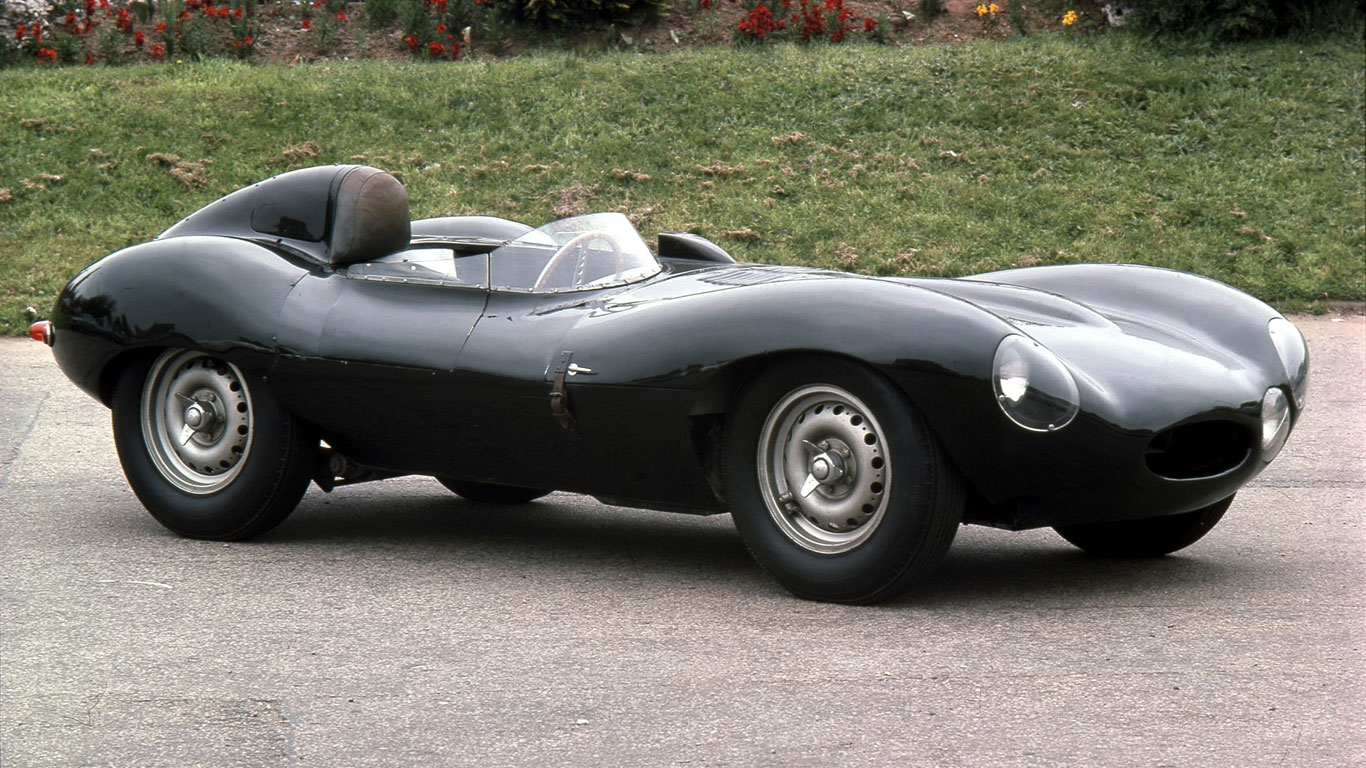
The D-Type was built to win Le Mans, something it did no fewer than three times. With such a tight brief, the issue of aesthetics would sit close to the bottom of the list of priorities, so it’s all the more remarkable that Malcolm Sayer created one of the most iconic shapes of the 1950s.
Few cars have an aura and presence quite like the D-Type: it looks like it’s hurtling along the Mulsanne Straight, even when it’s standing still.
The bodies were developed using 1/10th scale models in a wind tunnel, with Jaguar focused on reducing drag, minimising the effects of side winds and the impact of wind pressure. Amazingly, although it was rarely the most powerful car to line up at Le Mans, it was usually the quickest along the Mulsanne Straight.
The famous stabilising fin was riveted onto the team cars just before the 1954 Le Mans race, while the windscreen added a dash of comfort for the driver. In 2018, 62 years after the last example was built, Jaguar Classic restarted production of the D-Type.
Jaguar XJ13
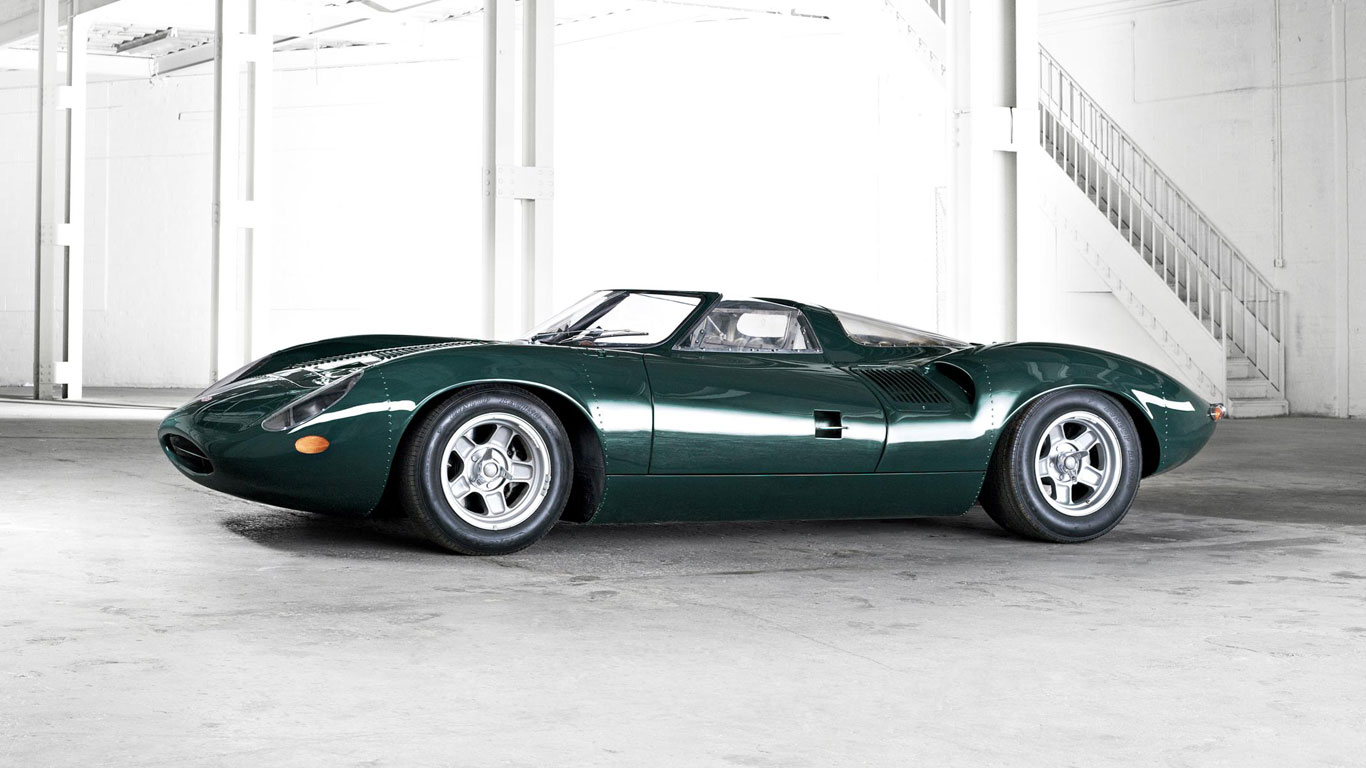
The XJ13 – or eXperimental Jaguar 13 – shares nothing in common with the XJ saloon and is arguably the most beautiful race car never to turn a wheel in competition. It looks like a direct descendant of the D-Type, which is no surprise given Malcolm Sayer’s role in its development.
The car was developed in secret, with Jaguar planning a return to Le Mans. But by the late 1960s, the British Motor Corporation (BMC) – which merged with Jaguar in 1966 – was more focused on the XJ6, meaning the XJ13 had to be developed out of hours.
The XJ13 was completed in 1966, but stood idle for a year before being taken out for its first trial. At the time, the existence of the XJ13 was a closely guarded secret, with Jaguar completing the first run at MIRA early on a Sunday morning. The trial was successful, but the V12-engined XJ13 was too slow to compete against Ferrari, Ford and the Porsche 917.
It lived under a dust cover until 1971, when it was rolled out to take part in a promotional film for the Jaguar E-Type V12. However, after a few too many laps, one of the ageing tyres deflated under load, resulting in a catastrophic crash. Driver Norman Dewis was unhurt, but there wasn’t a straight panel left on the XJ13. Fortunately, the car was rebuilt and is still run today.
SS Jaguar 100
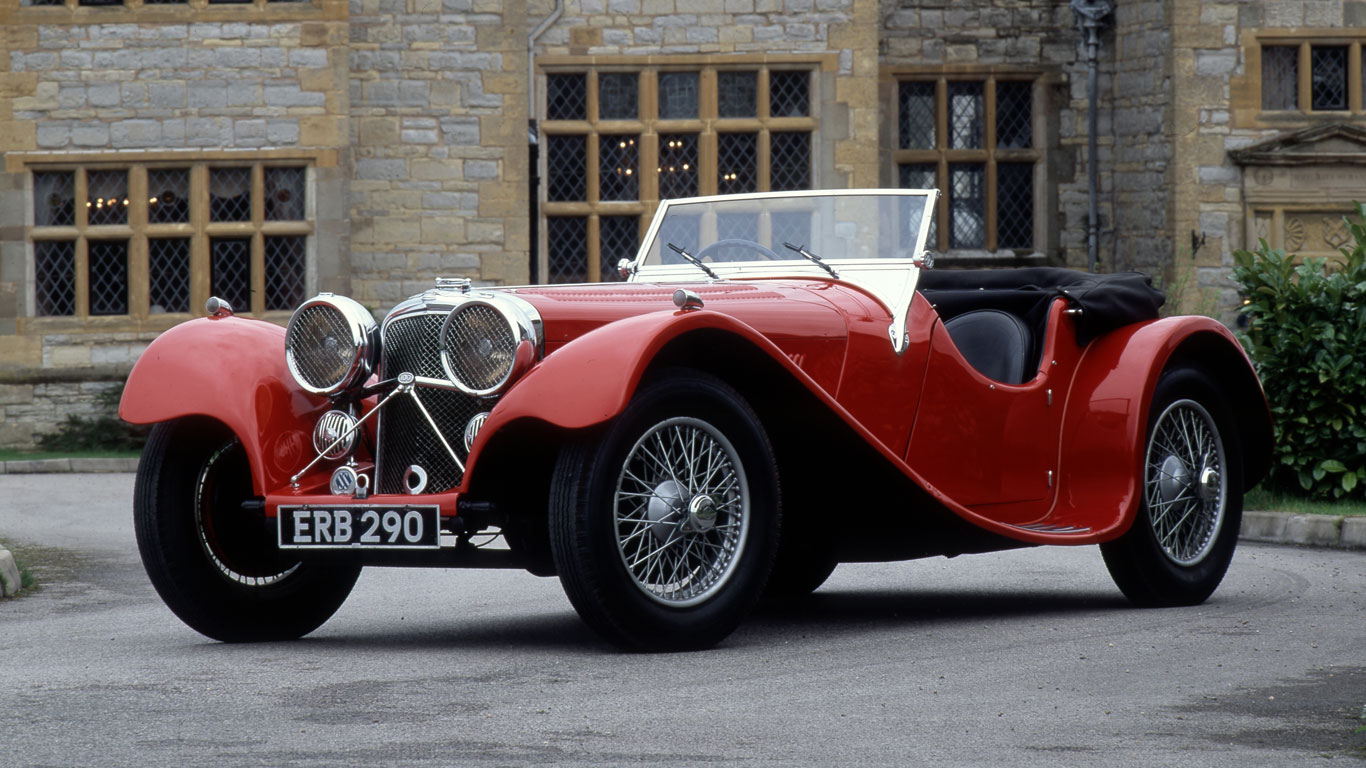
“Widely considered one of the most aesthetically pleasing sporting cars of the 1930s”, says Wikipedia. Jaguar’s roots lie in the Swallow Sidecar Company, with Sir William Lyons adopting the SS name in 1931. What did it stand for? Peter Skilleter’s book claims that the subject was never resolved, arguing that it could be Standard Swallow or Standard Special.
The use of Jaguar stems from when Lyons asked his publicity department to draw up a list of animal, fish and bird names. “I immediately pounced on ‘Jaguar’ for it had an exciting sound to me, and brought back memories of the stories told to me, towards the end of the 1914-1918 war”, said Lyons, specifically the Armstrong Siddeley ‘Jaguar’ engine.
Whatever the history of the SS and Jaguar names, there can be doubts surrounding the use of ‘100’ for the sports car launched in 1935, which referred to the theoretical 100mph top speed. Only 191 examples of the 2.5-litre SS 100 were built, but it laid the foundations for a future of Jaguar sports cars.
Jaguar XKSS
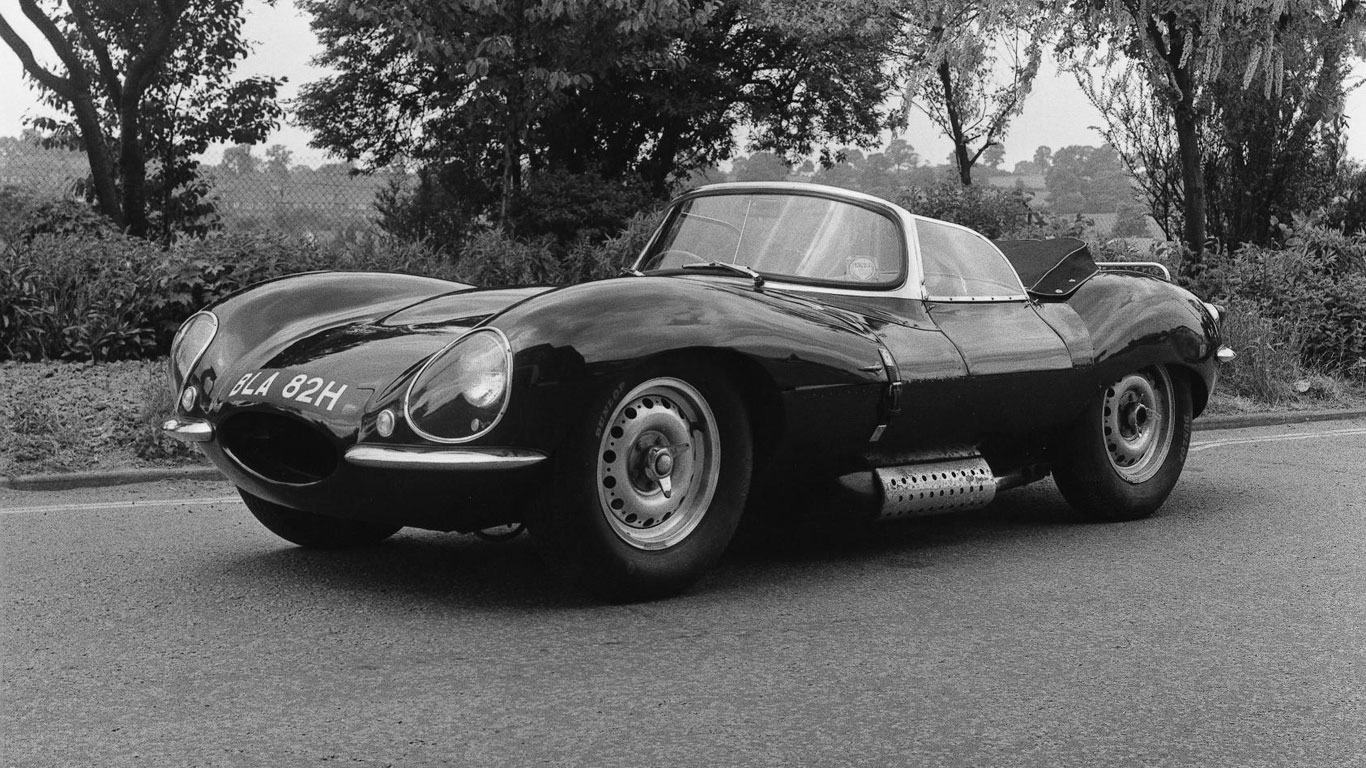
The XKSS was originally made by Jaguar as a road-going version of the Le Mans-winning D-type, built between 1954 and 1956. Nine cars earmarked for export to North America were lost in a fire at Jaguar’s Browns Lane factory, meaning just 16 examples were built.
Some claim that the XKSS was merely a car built to shift unsold stock of the D-Type, but the result was an achingly good looking sports car, even with a ‘proper’ windscreen, cutaway doors and a hood. There was no fin, as buyers were treated to a luggage rack.
In 2016, Jaguar announced that it would build the nine ‘lost’ XKSS sport cars, with each one sold for a price in excess of £1 million.
“The XKSS is one of the most important cars in Jaguar’s history, and we are committed to making the ‘new original’ version absolutely faithful to the period car in every way. From the number, type and position of all the rivets used – there are more than 2,000 in total – to the Smiths gauges on the dashboard, everything is the same as the original cars, be-cause that is the way it should be,” said Tim Hannig, director of Jaguar Land Rover Classic.
Jaguar XJ-S
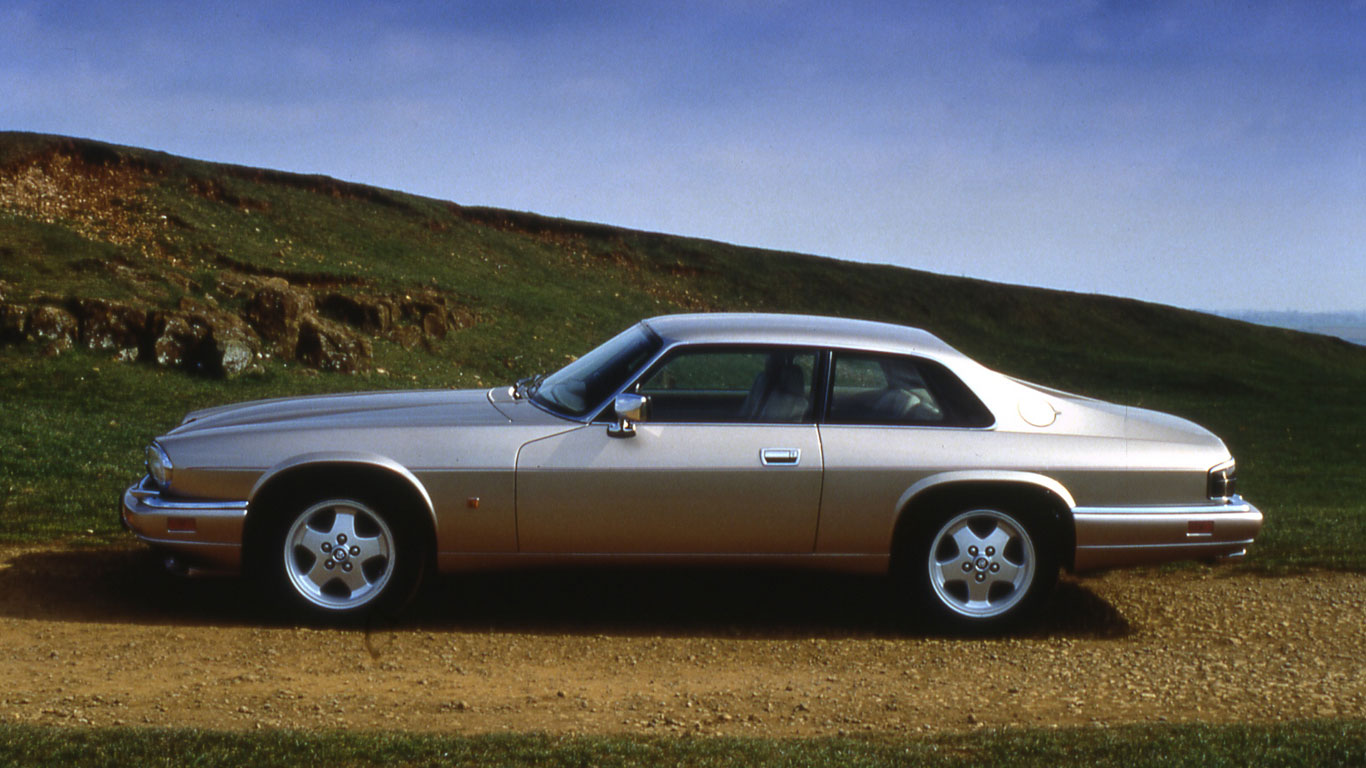
This will prove to be a controversial selection, but like a good wine, the Jaguar XJ-S (latterly the XJS) seems to get better with every passing year. In many ways it was doomed to failure, because replacing the E-Type was like stepping into Alex Ferguson’s shoes at Manchester United, or the Beatles creating a follow up to Please Please Me.
Alongside the E-Type, it may have looked too big, too much of a grand tourer, maybe even too ugly. But the E-Type hadn’t exactly grown old gracefully, and against the Series 3 the XJ-S felt more of its time.
The most controversial element of the styling were the flying buttresses, which were designed to add strength and improve high-speed stability. The press hated them, but they became one of the car’s most eye-catching features.
The XJ-S died in 1991, by which time it had evolved into a graceful and elegant grand tourer. Work began on a factory convertible in 1985, with Karmann handling the conversion. The XJ-S convertible – which was incredibly popular in the US – is arguably the most beautiful of the breed.
Jaguar XJ220
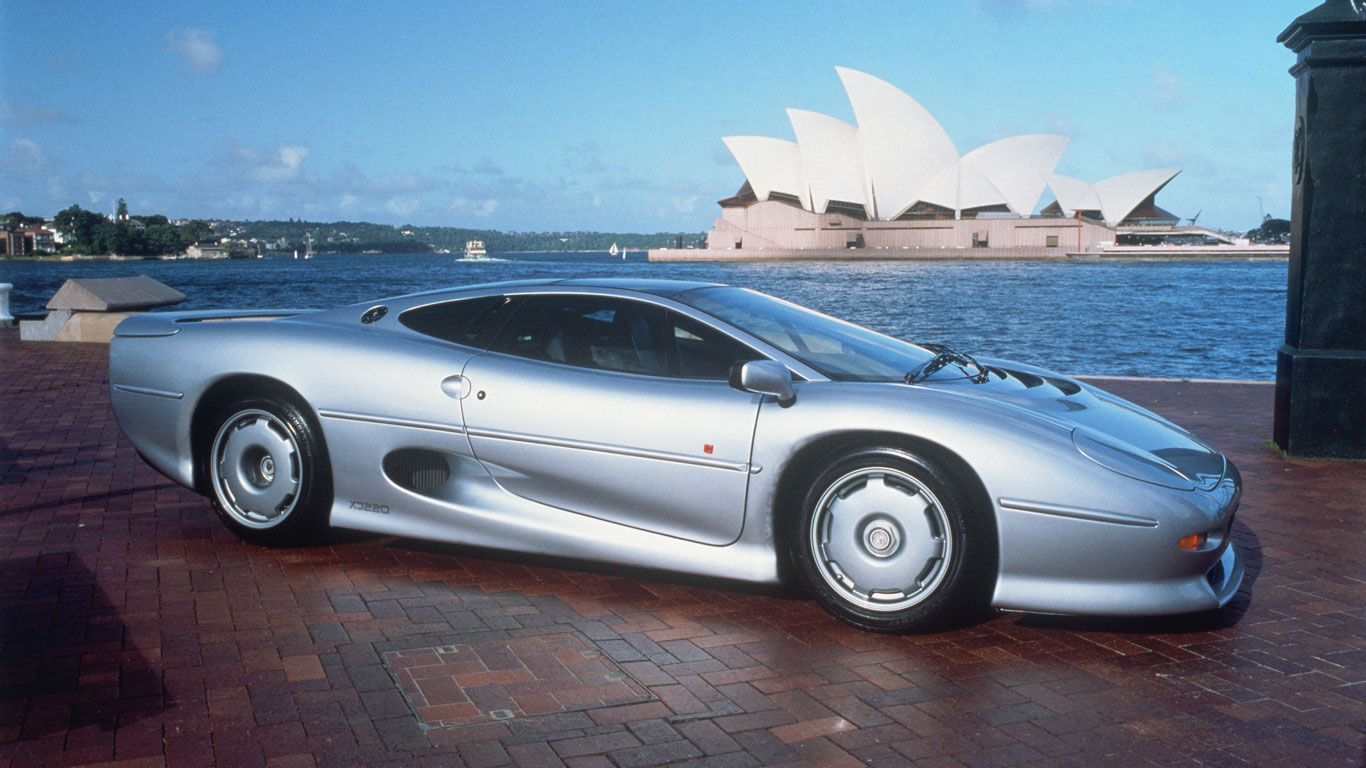
“On-road presence? I’ve never driven a car that turned more heads. Svelte styling? Have you ever seen a more beautiful front end, or a more shapely profile?” asked Gavin Green when writing for Car magazine in 1992.
All too often, stories about the XJ220 are accompanied by tales of the economic recession, the wrong engine and unhappy customers. When viewed purely on the basis of aesthetics, it’s striking enough to upstage the Sydney Opera House.
The styling was influenced by the XJ13, with Jaguar using a quarter-scale model for testing at MIRA’s wind tunnel. “It was scary – the thing looked the size of a house. You can’t scale the sense of scale! I actually felt guilty, too: we’d made the aluminium body panel beaters’ job so hard. Luckily, they disagreed and said it was the highlight of their careers – they’d never been stretched so much,” said Keith Helfet, the man responsible for the styling.
Do you agree with our choices? Maybe not, but then beauty is subjective. Here are four cars that failed to make the cut…
The ones that got away
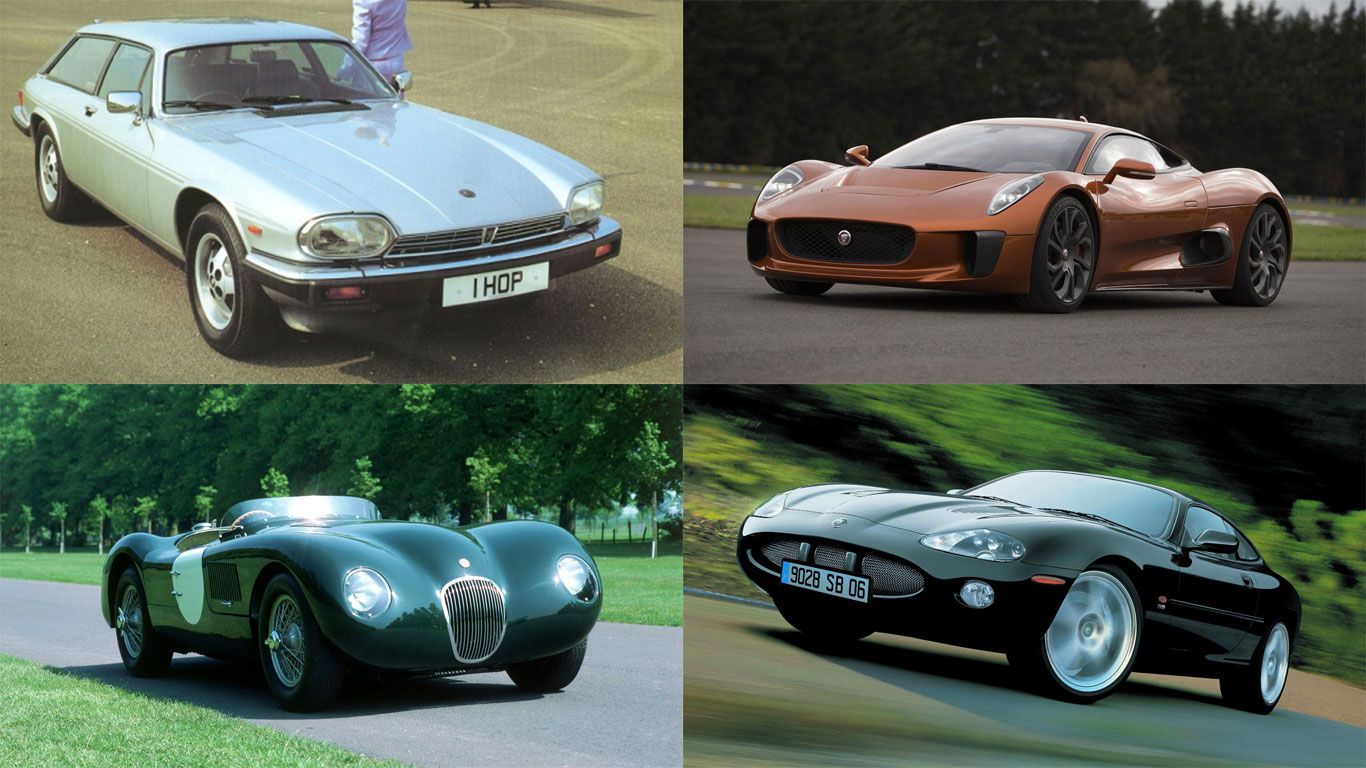
This is what’s commonly referred to as hedging your bets: chucking a few more Jags in the pot for good measure. Working clockwise from top left: Lynx Eventer, C-X75, XK and C-Type. Needless to say, the Queen will be sad to see that there’s no place for the X-Type estate…



[…] on a picturesque farm in Kent, E-Type UK has been restoring classic Jaguars since 2008. In 2018, it revealed a unique Series 3 V12 Roadster, known informally as ‘Project […]
[…] on a picturesque farm in Kent, E-Type UK has been restoring classic Jaguars since 2008. In 2018, it revealed a unique Series 3 V12 Roadster, known informally as ‘Project […]